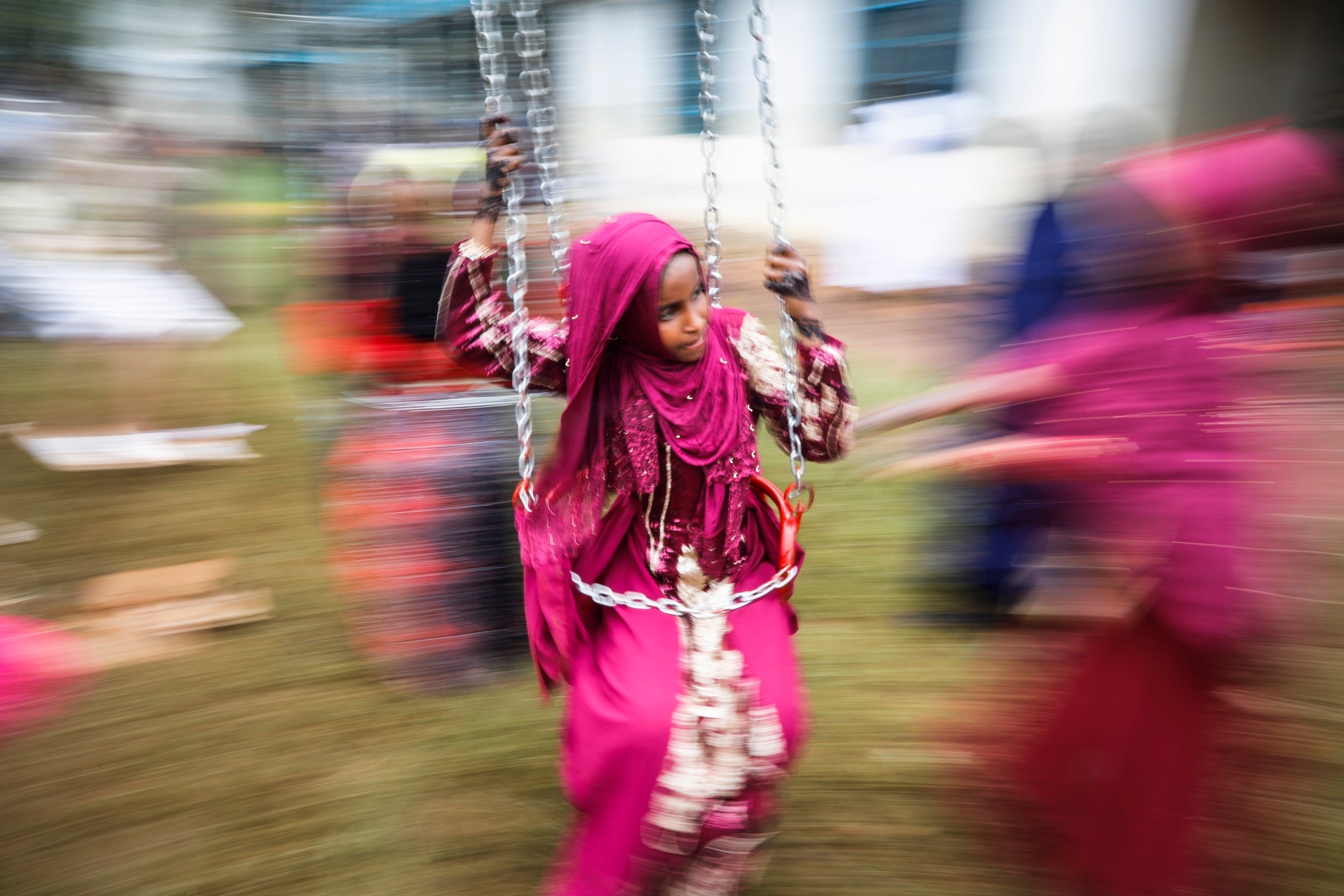My non-traditional Eid includes a secret Santa. Some orthodox Muslims don’t like that
As a young teen in San Jose, California, I would frequently accompany my Mormon friend Courtney to her LDS church socials. When I was younger, living in St. Louis, Missouri, I would bring home the Christmas ornaments we created in school and save them for Ramadan, which is when we’d hang them on our dedicated ‘Eid tree’. I credit such an upbringing with teaching me tolerance and compassion, and orthodox Muslims who reject such inclusivity are frankly missing out


My family WhatsApp group vibrates with a series of messages: we’ve just received the links that will tell us who we need to buy presents for on Eid, and the URL paths each mention the words “secret Santa”. At first glance, it might seem like an unlikely pairing of words in a Muslim group’s discussion about Eid festivities. But in my family, it’s just our technologically-aided way of picking names out of a hat for our annual Eid gift exchange tradition to celebrate the end of the Holy Month of Ramadan. And we have no issue with calling it what it is — a secret Santa gift exchange.
Although Santa Claus may be a fictional, traditionally Christian icon of Christmas, we have no qualms with reappropriating his name for our own purposes while celebrating a Muslim holiday. But over the years, I’ve found my friends’ and other Muslim families’ perspectives to be quite different, with an overall censorship of the word “Santa”, and resistance to television shows, movies, songs, games, toys, books and craft activities that involve this plump and jolly, white-bearded character.
While some Muslims living in Europe and North America believe it’s necessary to distinctly “separate” themselves from other religions, I think it’s important to promote inclusivity and to be realistic about how children understand and assimilate our approaches towards religion.
I can credit my open-mindedness today to my own parents, for whom an Islamic upbringing involved ingraining in me teachings of tolerance, love and inclusivity. Sprinklings of Santa Claus-inspired motifs and Christmas carols songs gave me joy as a child, and didn’t at all cause confusion as to my own religious standing. I was often the only Muslim child in the schools or classes that I attended across the United States, and had I been forbidden from participating in Christmas-themed craft activities, I would have felt excluded and othered, and would have probably resented my family and faith.
As a young teen in San Jose, California, I would frequently accompany my Mormon friend Courtney to her LDS church socials. When I was younger, living in St. Louis, Missouri, I would bring home the Christmas ornaments we created in school and save them for Ramadan, which is when we’d hang them on our dedicated “Eid tree”. A house plant in the corner of the living room would find itself dressed up in red, green and gold — sometimes even with red and white Christmas stockings, filled with candy canes and featuring my name in gold glitter, hanging from its branches. In recent years, Muslim-owned businesses have begun selling their own versions of Eid trees and plants for children, often decorated with small lanterns and fairy lights. However this has caused much debate and uproar among parents, who see it as a murky, Christian influencing of a traditional Muslim holiday.
After-effects of colonialism and long-standing Islamophobic sentiments have caused many Muslims to collapse into their tight-knit communities, wary of outsiders and “western” traditions. But using religion to perpetuate “east vs. west” or “believer vs. non-believer” narratives can be harmful, especially for impressionable children who are often in need of ways to make their religious celebrations more enjoyable and relatable. In my opinion, exposure to Christmas traditions — and those of other faiths — need not be seen as forbidden rituals. In fact, this type of rigidity, void of flexibility and fun, can conversely push children away from the faith, or, worse, interlace ideas of intolerance and inequity into their understandings of Islam, which, at its core, is a religion of peace.
Unfortunately, the wider Muslim community is one that continues to find causes for criticism, even with entertainment that is produced for Muslim children. When Disney Junior released its “Eid Mubarak” song last year in an episode of Mira, Royal Detective, many Muslim parents were angered by the scenes of children singing and dancing in the streets. I personally loved it, and in the lead-up to Eid this year have been playing it for my own daughter during mealtimes. Her other television favorites include Omar and Hana (a series centered on two young Muslim siblings) and Peppa Pig — and she’s also a big fan of watching kids’ dances to Jingle Bells tracks.
Having become accustomed to writing about topics that other, orthodox Muslims might find controversial, I’m prepared to be accused of pandering to the west in my interpretations and practices of Islam. As a Muslim born and bred in the US, however, I am a “western” Muslim, so my faith will be shaped by those lived experiences. Why are we so quick to bring east and west into religion anyway, which is universal and knows no borders? Contrary to thoughts that “genuine” Islam can be found only in the east, I’ve actually encountered more soul-enriching embodiments of Islam in the west, among converts to the faith, reformist initiatives and more inclusive approaches to community-building.
Being an avid nonfiction reader, my writing is often influenced by my reading, and this case is no different. I was recently introduced to the work of Lex Hixon, an American convert to Islam, and Sufi Sheikh, who also studied with Fathers of Eastern Orthodox Christianity. He preached that the Abrahamic faiths all celebrate the same God, just through different paths and prophets, who all came from a singular source. “There is only One Reality manifesting through all the great authentic spiritual traditions, and at the higher level, no actual conflict or divine rivalry exits between the religions,” writes Gregory Blann in Living Open Space: The Interspiritual Journey of Lex Hixon. Religions, thanks to religious zealots, are often pitted against one another, but I find comfort and validation in Hixon’s teachings.
Yesterday evening, as we sat around a table of dates, soup and samosas, awaiting the sunset prayer call that would signify my fasting family members could now eat, I told my mother that I was writing about our secret Santa Eid tradition, and why it might be controversial to other Muslims. Her response was, “What’s wrong with it? I love the fairytale of a big red man flying with reindeers and coming down chimneys — it’s such a cute story!” For at the end of the day, that’s what it is — a cute story, harmless, and undeserving of all the controversial baggage with which some would have it hampered.
Join our commenting forum
Join thought-provoking conversations, follow other Independent readers and see their replies
Comments
Bookmark popover
Removed from bookmarks